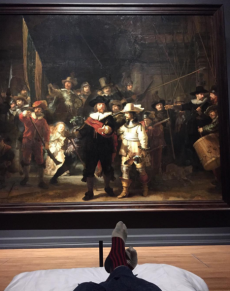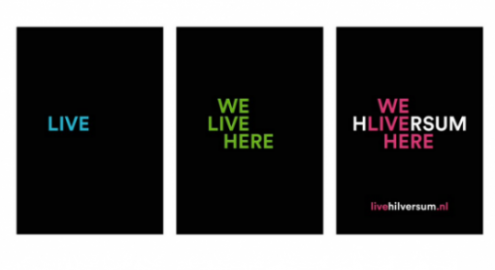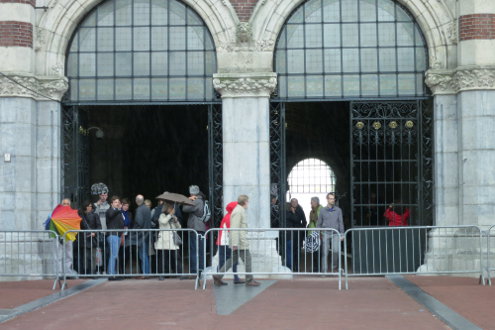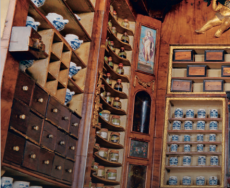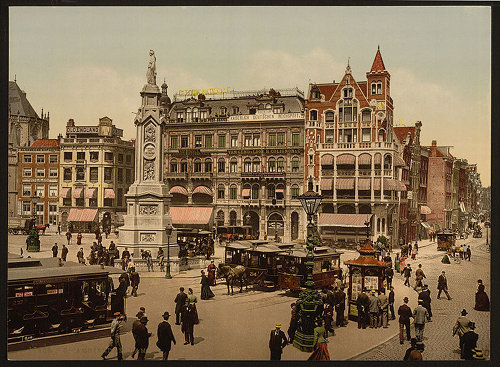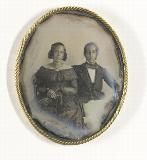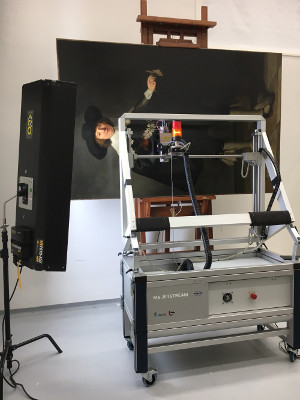
The mobile macro-XRF scanner (Bruker M6 Jetstream) developed by the University of Antwerp and Delft University of Technology
The Rijksmuseum in Amsterdam uses a Macro-X-ray Fluorescence scanner (MA-XRF, similar to this one) to analyse the different chemical elements found in the paint of artworks, making it possible to identify the pigments used and providing more specific information about the stages of the working process. This also helps museums identify whether a painting is really from a certain painter, not something left to the naked eye anymore, thanks to technology.
The Nederlands Forensisch Instituut (NFI – Dutch Forensics Institute) will be collaborating with the Rijksmuseum to use the scanner in order to find evidence material with a view to solve crimes. Besides identifying pigments, the scanner can identify blood, sweat, saliva, urine and sperm on things such as clothing, and can even analyse bullets.
Scientists from the NFI, the University of Amsterdam and the Delft University of Technology published results about using the scanner for solving crimes last week. The NFI doesn’t have its own scanner simply because it’s very expensive. And until the NFI can get their hands on one, they’ll be coming round to the museum when they need to use the scanner. And yes, it does sounds like many a television series’ plot.
A little finch just told me that the Mauritshuis museum in The Hague will be borrowing a scanner just like this to analyse Vermeer’s Girl with a Pearl Earring in the new future, but then just to find out more about the painting, not to solve any crime.
(Link: , Photo and a good read: lookingthroughartblog.wordpress.com)

